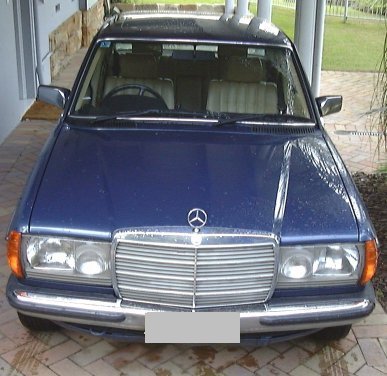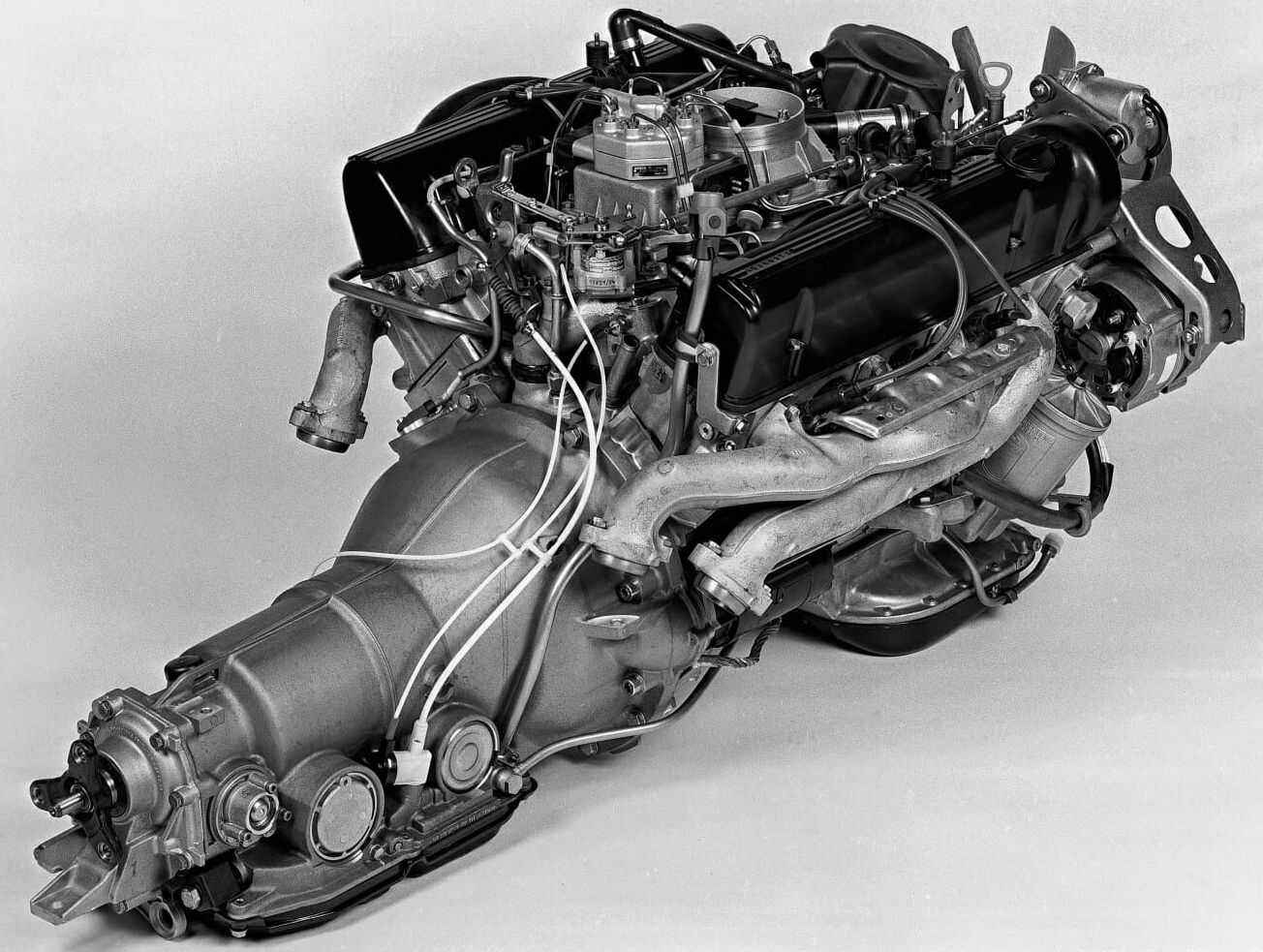Which is the slowest W126?
Many people are interested in which cars are the fastest, but perhaps a more interesting question is which is the slowest W126? There were a plethora of W126 models offered from 1979-1991 and not all of them were particularly fast.
For the purposes of this test, I have assembled some contenders, based on data from www.automobile-catalog.com. This comparison assumes the cars are in as-new condition. Obviously a car with low compression and a bad transmission is going to be slower.
Here are the contenders:
280SEL for the Swiss market
The Swiss market had very similar emissions laws to Australia, Japan and the USA during the early 80s. The result of this was that the injected M110 engine was reduced to 118KW. The big difference is that unlike Australia where the 280SE was offered, in Switzerland the heavier 280SEL was made available. Our test car is from 1983. These emissions laws increased the fuel consumption at the same time as blunting the performance.
Speeds are very low in Switzerland and the cars were probably used for chauffeur duty, meaning the impact other than fuel consumption was probably irrelevant.
380SEL for North America
The USA emissions laws had a profound impact on the 380SEL. So much so that it is incredible to see a V8 in this line up. Mercedes also persisted with the 2.47 rear axle ratio, likely because of the CAFE fuel consumption regulations. To add insult to injury, these early cars were equipped with a single row timing chain that could break without warning. North American models also came fully equipped resulting in the lowest power to weight ratio of any petrol W126.
Our test car is also from 1983.
280S
The 280S was the entry level model of the W126 range. I understand it was largely sold in countries with poor fuel and where it may be hard to find people who could service a fuel injection system. It it has the lowest power and worst fuel consumption of any of the cars tested. However, it is lighter than some of our other contenders and has a shorter rear end ratio. Our test car is from 1985.
I used to see a few of these during the 90s as private imports in Australia. It has been years since I have seen one.
1985 300SD North America
The 300SD is a very popular car because of the incredible longevity of the engine and its great fuel consumption. It is almost unfair to compare it to the other cars for this reason. However, it is the slowest W126 by a fair margin. It is just that it has so many other redeeming features that still make it a great choice if you live in North America. The photo below is of a car that I saw in a junkyard while living in America. I still have the owners manual. Our test car is from 1985, as this year had the tallest rear end ratio.
260SE Catalyst
The 260SE replaced the 280S in the line up. It is most popular in countries with high taxes on engines with larger displacement. Despite its smaller displacement it is the fastest W126 in our line up. Our test car is from 1991 and is fitted with a catalytic converter, as many from the series 2 range were.
1987 300SDL (USA)
The second generation diesel engines were far smoother and more powerful than the venerable OM617. They also had much better fuel economy. The only downside is that they are not quite as robust. They can still go big mileages, but the heads have been known to crack.
These are still an excellent car and in my mind the most desirable on the list. There is a great video by Pierre Hedary that is worth watching.
Conclusion
While technically the winner of this challenge is the 300SD, the real winner is the 380SEL (USA). The diesels are a trade off between performance and fuel consumption/longevity. It is incredible that the performance of the 380 suffered so much due to emissions. It is probably why these cars are now rare in the USA – once the second generation models came out there was really no comparison. The only first generation model that is still common in the USA is the diesel, as a result of its cult following.
None of these cars are bad, in some ways this is a particularly silly test. But it is interesting to compare the different models and work out who should be crowned the slowest W126.
| Car | 1983 280SEL (CH) | 1983 380SEL (USA) | 1985 280S | 1985 300SD (USA) | 1991 260SE Catalyst | 1987 300SDL |
|---|---|---|---|---|---|---|
| Weight (kg) | 1590 | 1715 | 1560 | 1710 | 1570 | 1740 |
| Power (kW) | 118 | 116 | 115 | 92 | 118 | 107 |
| Torque (Nm) | 224 | 266 | 223 | 250 | 220 | 264 |
| Power/Weight (watt/kg) | 73.9 | 67.3 | 73.7 | 53.8 | 75.2 | 61.3 |
| Rear end | 3.46 | 2.47 | 3.46 | 2.88 | 3.46 | 2.88 |
| Est Top Speed (km/h) | 196 | 188 | 195 | 180 | 206 | 195 |
| 0-100km/h (s) | 11.8 | 11.7 | 11.6 | 14.9 | 10.6 | 12.9 |
| 0-1/4 mile (s) | 17.9 | 18.4 | 17.8 | 19.5 | 17.1 | 18.5 |
| Speed at 1/4 mile | 126 | 120 | 127 | 115 | 129 | 120 |
| Overtaking speed (80-120km) | 9 | 10 | 8.9 | 11.2 | 8.2 | 10.3 |
| City fuel consumption | 16.4-19.7 | 15.3-18.4 | 18.5-22.2 | 11.4-13.7 | 15.8-19 | 8.9-10.7 |






























































One thing to consider with the 85 300SD: In addition to the taller rear end ratio, they also got a higher stall speed torque converter. So around town they don’t feel much slower than the earlier models, and the engine is much less busy on the highway.
1985 was the first year you could get an SRS airbag in the US (Optional, standard in 1986), and ABS was available too (optional in 84 I think, standard in 1986). So condition aside, an 85 300SD is the car to get if you want a 5 cylinder diesel IMHO.
The 350SD/L is a bit slower than the 300SDL… 10 fewer HP (thanks to the 1200 RPM lower fuel limiter) and a slightly taller rear end ratio. At low speed the 350 is faster thanks to the extra torque, though.
Makes the 300SDL more attractive than the 350 based on that, especially the 350’s reputation for bending rods.
If you can find a 350 with a MB reman engine, they’ll run great. All 350s have cylinder heads less prone to cracking, the updated soft leather interior, 10 speaker stereo, and have available ASD + Limited Slip for 1991 models. They also have a larger capacity AC compressor and condenser than the 300SDL.
Two annoying thing: 1991 350SDs and SDLs (but not 1990 models!) have a unique 3 piece driveshaft with 2 carrier bearings. That makes finding remans difficult since they must come from another 350. Also, all 1991-1993 US market cars have the Becker Mexico 2000 stereo – which sounds great when it works but requires a quite a bit of rewiring to be replaced if it fails.
My personal W126 is a 91 350SDL. It got a MB reman engine installed around 150,000 miles, the odometer is at 230,000 miles now. The engine was produced in 2001, so it has all the latest parts. It uses perhaps half a quart of oil over 7500 miles! I have turned the injection pump up a hair, it does 0-100k in about 11 seconds.
Sounds like you’ve got the best of both worlds there. A 350, but with the reman engine and the update interior. And with less than 100k on the engine, plenty of life left in the car!